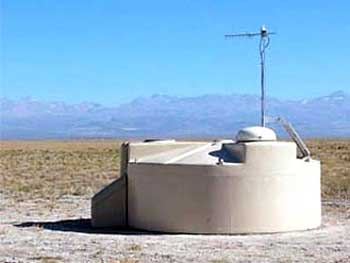The American journal “Science” has forecasted that in 2006, scientists will make breakthroughs in research across the following 8 fields and scientific directions:
1- Drugs and vaccines against influenza: In 2006, scientists will actively advance research on drugs and vaccines against influenza. It is anticipated that this year, fields such as molecular biology, the evolution of influenza viruses, influenza epidemics, and acute viral respiratory diseases will see numerous new discoveries.

The state-of-the-art cosmic radiation observatory named Pierre Orges
2- Large-scale laser gravitational wave monitoring devices: The design of the framework for the LIGO (Laser Interferometer Gravitational-Wave Observatory) project and the manufacture of two large-scale laser gravitational wave monitoring devices will be put into use. These two observatories are located in Louisiana and Washington (USA). They have been operational for testing since 2002, but until now, they have only been able to perform some experimental measurements. With the support of these observatories, physicists will be able to conduct research and observe gravitational waves from neutron stars.
3- Ribonucleic acid (RNA) will participate in diagnosis and treatment: RNA-based diagnosis and treatment is a completely new clinical experimental method. Currently, this method is in the experimental phase and will be used in treating retinal degeneration and some viral infections. Soon, this method will also be applied to treat viral hepatitis and certain neurological diseases.
4- Modernized cosmic radiation observatory: In 2006, the ultra-modern cosmic radiation observatory named Pierre Orges will strive to be completed; this astronomical observatory will be built in Argentina. This device will be used to collect information about the most valuable high-energy cosmic radiation.
5- New advancements in earth microbiome research: The journal “Science” believes that conducting research projects on microbial groups will give us further insights into how the first eukaryotic cells emerged on Earth 1.5 billion years ago, leading to the appearance of a large number of multicellular organisms.
6- Helium-4 transitioning from solid to liquid state: Two years ago, physicists from the University of Pennsylvania announced that they successfully observed the transition of Helium-4 from a solid to a liquid state. This information has yet to be confirmed by any other laboratory in the world. It is highly likely that in 2006, scientists will provide a definitive conclusion regarding this matter.
7- Research on high-temperature superconductors: Since the discovery of high-temperature superconductors in 1986, research in this area has continued. There is a possibility that in 2006, after many years of study, scientists will solve the puzzle of how high-temperature superconductors work.
8- Confirmation of the discovery of the Ivory-billed Woodpecker: In early 2005, American ornithologists discovered the Ivory-billed Woodpecker in Arkansas, a species believed to have been extinct for over 50 years. Currently, evidence regarding the existence of this bird consists only of a 1.5-second documentary clip and some audio material. The journal “Science” predicts that in 2006, there will be credible evidence to support this new discovery.
Tuyết Nhung


















































